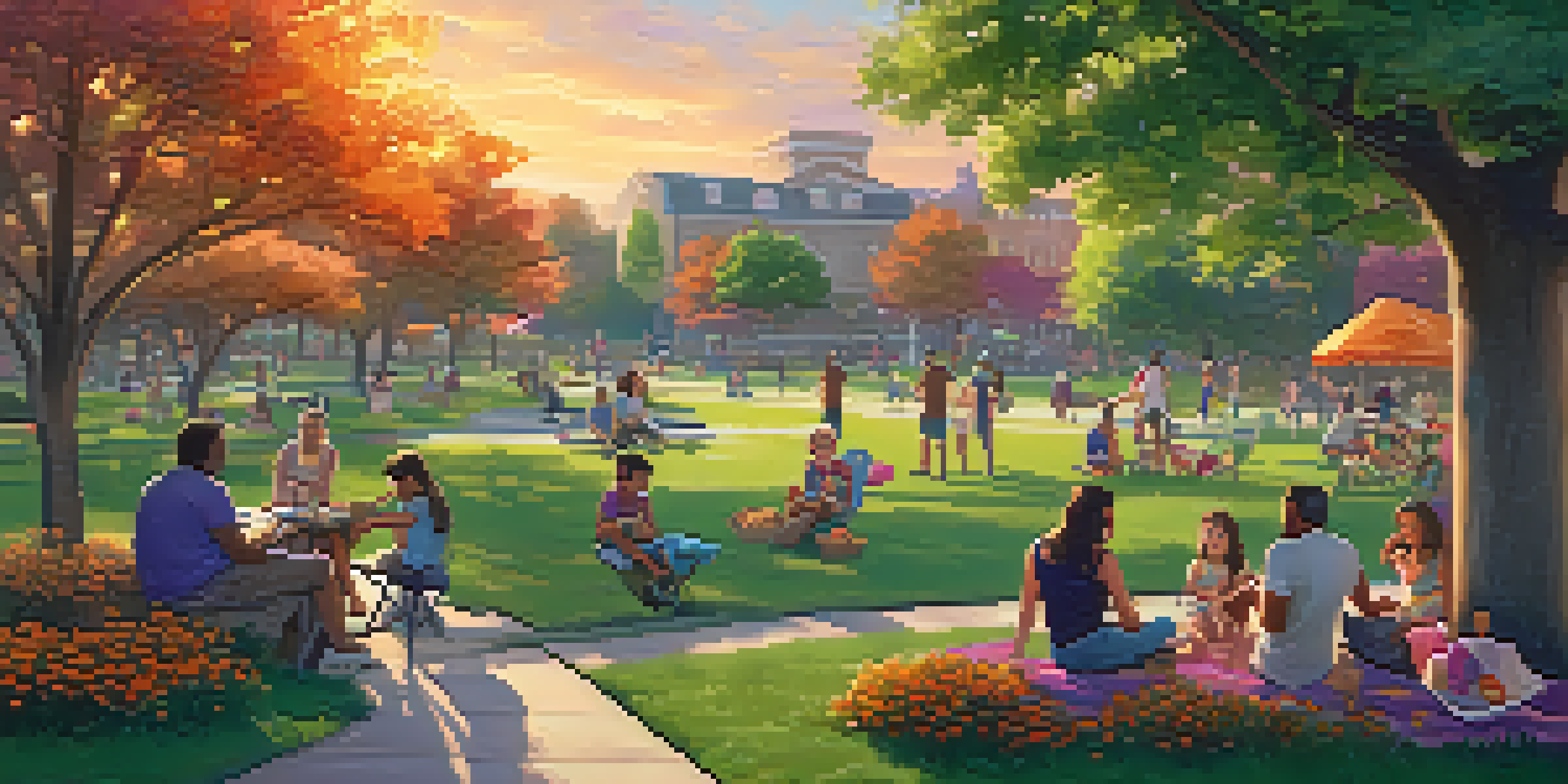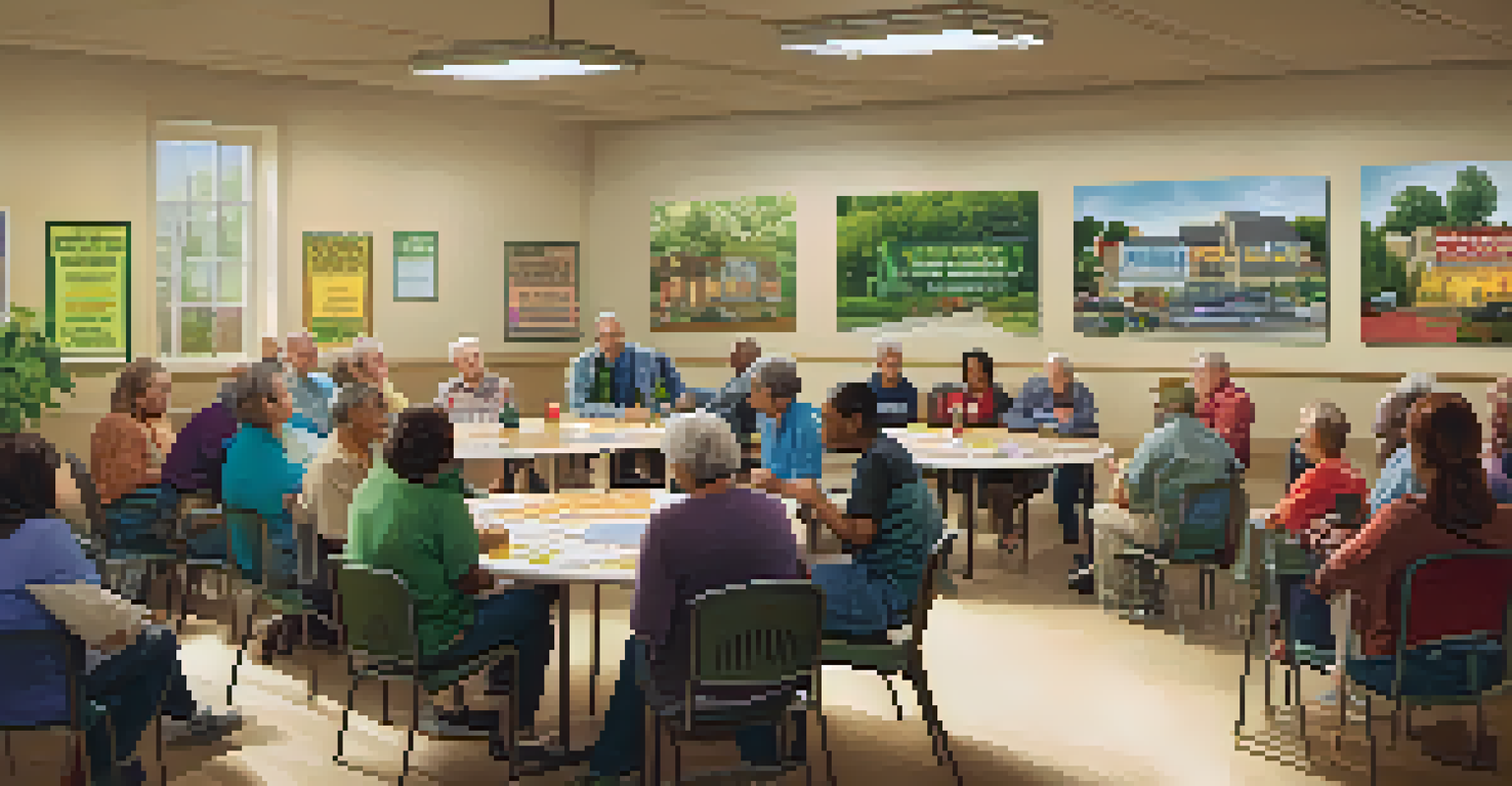Creating Safe Spaces: Self Defense in Neighborhoods

Understanding the Importance of Safe Spaces
Safe spaces are essential for fostering a sense of security within neighborhoods. They allow residents to feel comfortable in their surroundings, which is crucial for community bonding. When people feel safe, they’re more likely to engage with one another, creating a tight-knit community.
The best way to find yourself is to lose yourself in the service of others.
Moreover, safe spaces can act as deterrents for crime. When neighborhoods are proactive about safety, it sends a message that residents are vigilant and prepared to protect themselves. This can discourage potential offenders from targeting these areas.
Ultimately, creating safe spaces is about cultivating a culture of awareness and support. It encourages residents to look out for one another, making it easier to identify suspicious activities and respond appropriately.
Community Engagement: A Key to Safety
Engaging the community is one of the most effective ways to enhance neighborhood safety. Organizing events, such as neighborhood watch meetings, can help build trust and camaraderie among residents. These gatherings can serve as platforms for sharing safety tips and personal experiences.

Additionally, when people know their neighbors, they’re more likely to look out for each other. This sense of responsibility can lead to quicker responses in emergencies and a more proactive approach to community safety. For instance, a simple wave or a chat with neighbors can foster a sense of belonging.
Safe Spaces Foster Community Bonds
Creating safe spaces helps residents feel secure, encouraging them to engage and build strong community connections.
Involving local authorities in community activities can also strengthen safety measures. Having police officers participate in events can build rapport and encourage residents to report suspicious behavior without fear.
Self-Defense Training: Building Confidence
Self-defense training is not just about physical techniques; it’s about building confidence. Knowing how to protect oneself can greatly reduce fear and anxiety in everyday situations. Classes can range from basic awareness techniques to advanced martial arts, catering to different comfort levels.
Safety isn't expensive, it's priceless.
Participating in self-defense training can also create a sense of community. Individuals often form bonds with fellow participants, sharing experiences and encouraging one another. This support network can be invaluable, especially for those who may feel vulnerable in their neighborhoods.
Moreover, self-defense training can empower individuals to take control of their safety. By learning practical skills, residents gain the tools necessary to respond effectively in threatening situations.
Establishing Safe Zones for Gathering
Creating designated safe zones in neighborhoods can enhance community security. These areas can be parks, community centers, or other public spaces where residents can gather without fear. Having a common area fosters social interaction, which can lead to stronger neighborhood ties.
Safe zones can also serve as meeting points during emergencies, providing a sense of order and support. When everyone knows where to go in times of crisis, it minimizes panic and helps maintain a level of calm. This organization can make a significant difference in emergency situations.
Community Engagement Enhances Safety
Active community involvement, such as neighborhood events and watch meetings, strengthens trust and promotes proactive safety measures.
Moreover, these spaces can host safety workshops and community events. By using safe zones for educational purposes, residents can learn more about safety protocols, self-defense techniques, and how to support one another.
Leveraging Technology for Neighborhood Safety
In today’s digital age, technology plays a crucial role in enhancing neighborhood safety. Apps that allow residents to report suspicious activities instantly can foster quicker responses from local authorities. These tools can bridge the gap between residents and law enforcement.
Moreover, neighborhood social media groups can keep residents informed about local safety concerns. Sharing information about recent incidents or safety tips can empower community members to stay vigilant and proactive. It also creates a platform for discussing safety strategies.
Additionally, neighborhood surveillance systems can deter crime. When potential offenders see that a community is equipped with cameras and monitoring systems, they may think twice before engaging in criminal activities.
Emergency Preparedness: A Community Approach
Being prepared for emergencies is essential for any neighborhood. Establishing a community response plan can ensure that residents know what to do in various situations, from natural disasters to personal safety threats. This collective preparedness can save lives and reduce panic during crises.
Regular drills and training sessions can familiarize residents with emergency protocols. These activities can include fire drills, active shooter scenarios, or first aid training, which equip individuals with essential skills when they’re needed most. Engaging the community in these practices can foster a sense of resilience.
Education Empowers Neighborhoods
Teaching residents about safety protocols and conflict resolution fosters a culture of awareness and support within the community.
Furthermore, having a communication plan in place is vital. Residents should know how to reach one another and stay informed during emergencies, ensuring that everyone is accounted for and safe.
Promoting Awareness: The Role of Education
Education is key to creating safe spaces in neighborhoods. Teaching residents about personal safety, conflict resolution, and de-escalation techniques can empower them to handle situations better. Workshops and seminars can provide valuable insights and foster a culture of safety.
Schools can also play a vital role in promoting safety awareness. By incorporating safety education into their curricula, they prepare children and teens to recognize potential dangers and respond appropriately. This knowledge can be life-changing, instilling confidence in young individuals.

Moreover, educational initiatives can extend beyond formal settings. Community leaders can host informational sessions that encourage open discussions about safety, allowing residents to share their concerns and learn from one another.
Building a Culture of Support and Safety
Ultimately, creating safe spaces in neighborhoods is about building a culture of support. When residents feel connected and engaged, they’re more likely to look out for one another. This sense of community can significantly enhance overall safety.
Encouraging open communication and regular check-ins among neighbors can foster strong relationships. Simple gestures, like asking how someone is doing or offering assistance, can create a supportive environment where everyone feels valued.
By working together, neighborhoods can create a vibrant, safe environment where residents thrive. This collective effort is essential for reducing crime and promoting a sense of belonging, making neighborhoods feel like home.